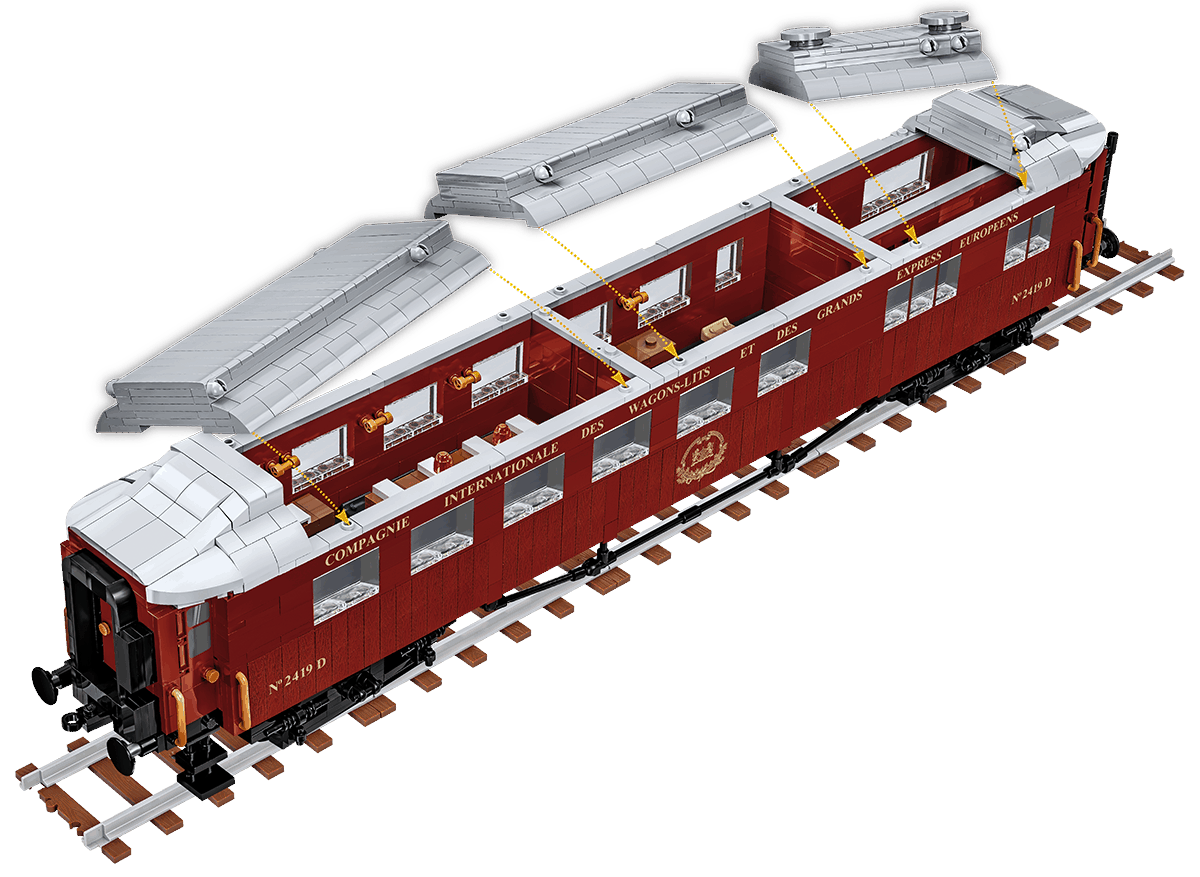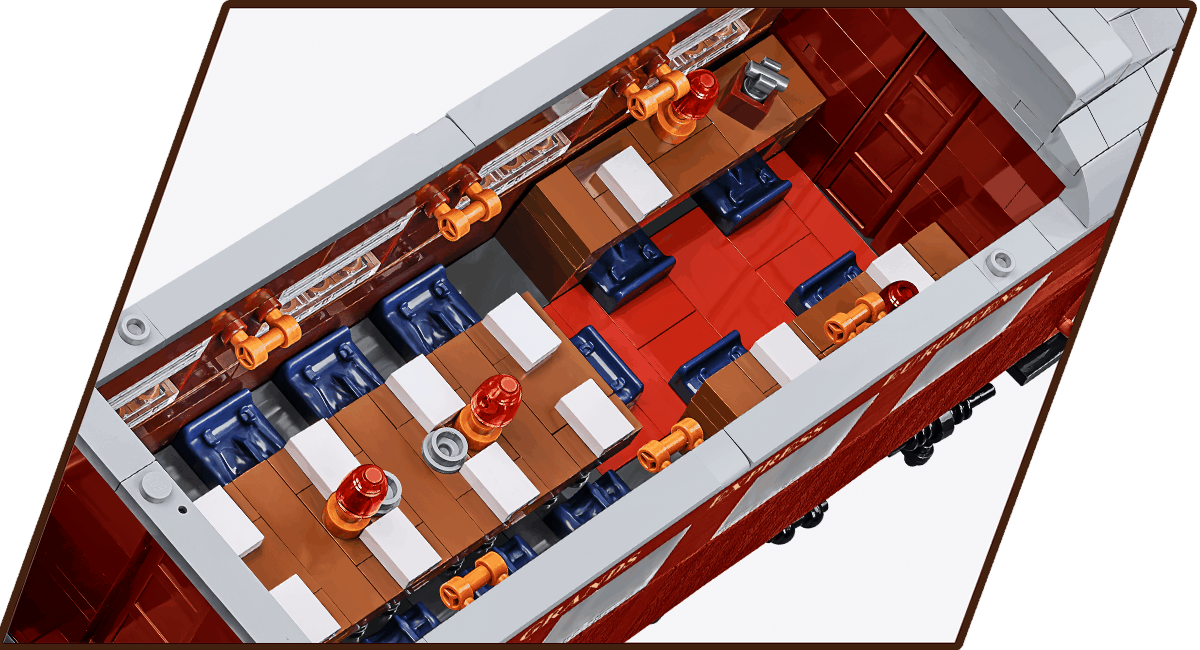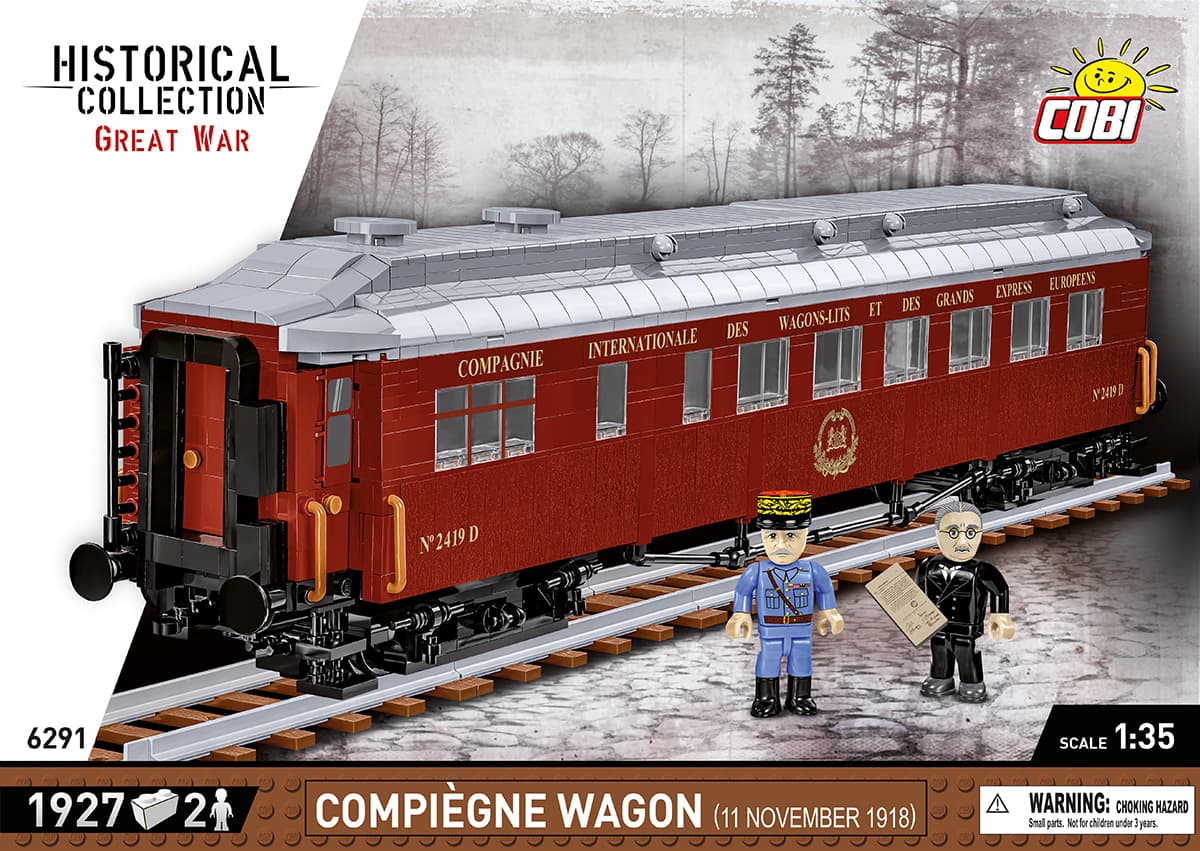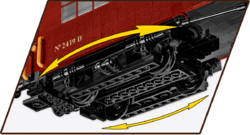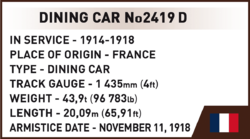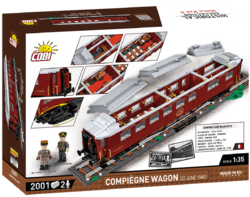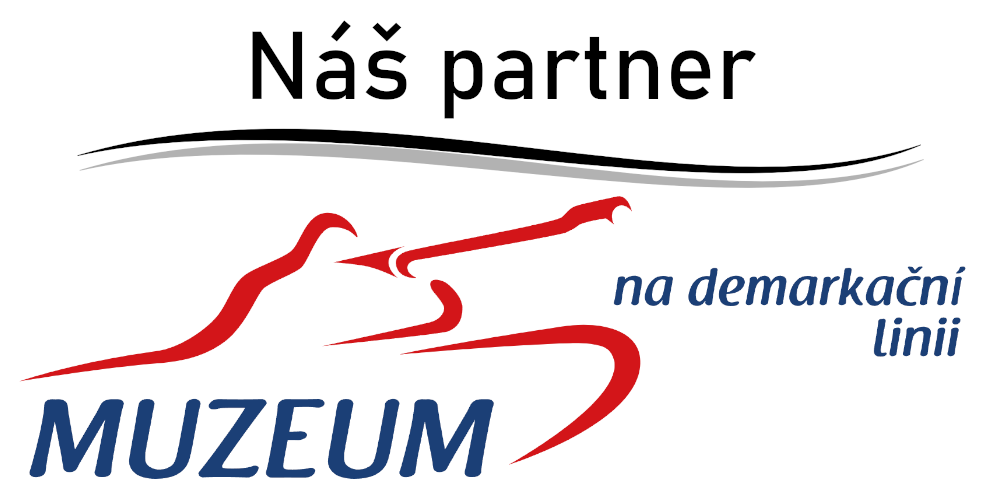Kit of the model of the famous railway car 2419 D in which the armistice that ended the First World War was signed. The assembled model bears the insignia of the Compaignie Internationale des Wagons-Lits as it did on the actual car. The model has removable roof segments for a peek into the interior of the conference room, crew office and French Marshal's personal compartment. The chassis is turning and can handle R88 turns. There are couplers at both ends of the wagon, so it can be easily connected behind COBI locomotives or connected to several wagons. The package also includes five track segments with a total length of 58 cm. The tracks are made using the two-color injection method for the highest possible fidelity. Each segment has a hole in the sleeper for attaching the track to the diorama. In the package you will also find a figurine of the personalities who made up the history of Marshal Ferdinand Foche and Mathias Erzberger with the Armistice Treaty.
Show more
0 %
(0 Ranking)
4 141 Kč
pcs
Add to Cart
In stock - ready to ship (1 pcs)
| List Number: | COBI-6291 |
| EAN: | 5902251062910 |
| Warranty: | 24 months |
| Manufacturer: | COBI |
| Loyalty Points: | 42 |
| Price excluding VAT: | 3 422,02 Kč |
Description
Parametres
Files and Links
Discussion
Reviews

You know that:
- The railway carriage was originally built in 1914 by the Compagnie de Wagos as a luxury dining car for the Orient Express.
- At the end of World War I, the wagon was seized by the French army and converted into Marshal Ferdinand Foche's mobile headquarters, and it was in this wagon that the armistice between the League of Nations and the German Empire was signed on 11 November 1918.
- Marshal Foche's staff wagon was not chosen for such an important event for symbolic reasons, but it was because it was the easiest way for the negotiating parties to meet.
- The signing of the ceasefire agreement was punctuated by dramatic events. The unfavourable situation at the front, mass protests in Germany and the abdication of Kaiser Wilhelm II led to political changes that forced Germany to negotiate.
- When the German delegation left by train on November 8, 1918, for the meeting place, it was still uncertain whether the agreement would be reached at all. The ten-hour ride through war-torn France left a deep imprint on the members of the delegation.
- The German delegation arrived at the disused railway line in the Compiegnes Forest in the early hours of the morning, and subsequently transferred to Marshal Foche's car.
- For the next two days negotiations on the terms of the armistice and the future organisation of Europe took place in the railway carriage.
- Finally, at five o'clock on the morning of November 11, 1918, the armistice was finally decided.
- Effective 11:00 a.m. on November 11, 1918, the guns fell silent and the world began to celebrate the end of the war
- The agreement contained a total of 35 conditions, the most important of which were the cessation of all military operations, the release of prisoners of war, the withdrawal of the German army from France and the Eastern Front, the surrender of all German submarines, 5,000 guns, 25,000 machine guns, 1,700 aircraft, 3,000 mortars and 150,000 vehicles.
- After the signing of the Armistice, the railway carriage was transported to the French Army Museum in Paris.
- Today we know that the history of this car does not end here, and 22 years later it was again part of equally dramatic events
Technical parameters:
- Dimensions: length 20.09 m, width 2.7 m, height 3.9 m
- Weight 43 900 kg
- Wheelbase 1435 mm
- Dining carriage type
- Metal construction, teak wood cladding
Statement by Marshal F. Foche to M. Erzberger on the signing of the armistice:
"Very good."
Návod na sestavení
| Scale | 1 : 35 |
|---|---|
| Recommended age | 11+ |
| Version (series) | 11/2024 |
| Number of pieces | 1927 pcs |
| Number of figurines | 2 pcs |
| Package weight | 2120 g |
| Box dimensions | 45 x 32 x 11 cm |
| Dimensions after assembly | 58,5 x 13 cm |
| Collection | Great War |
| Contains luminous blocks | No |
| Material | Plastic |
| Compatible with other brand of kits | Yes |
Discussion is empty.
There is no review for product yet











